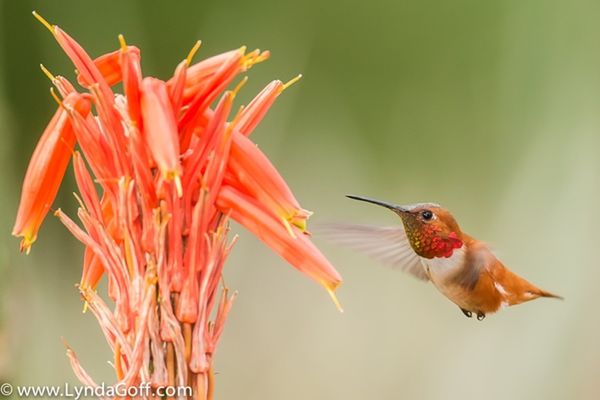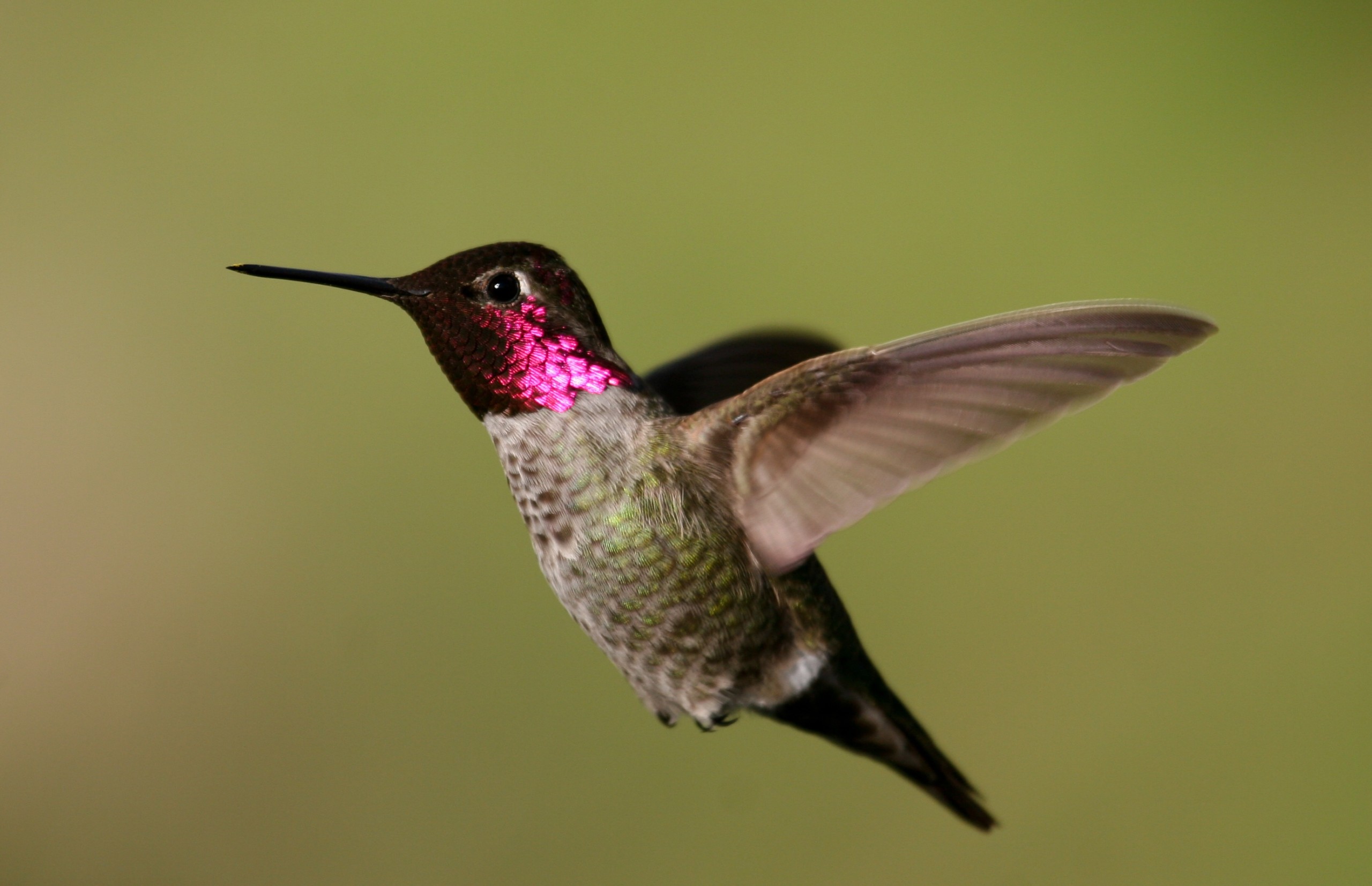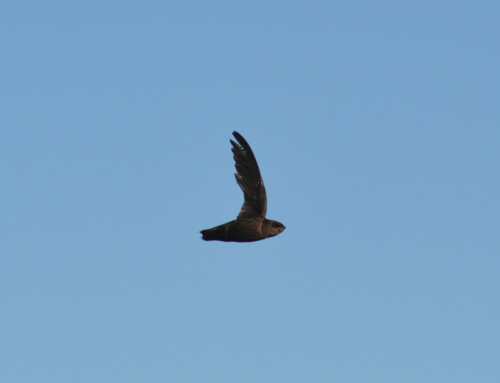 LINKED PAPER
LINKED PAPER
Demography of two species and one genus of hummingbirds with contrasting population trends in California, USA. English, S.G*., Colwell, R.R., Robinson, B.W., Ernest, H.B., Bishop, C.A., Bandivadekar, R.R. & Tell, L.A*. 2021 Journal of Field Ornithology. doi: 10.1111/jofo.12396 VIEW
*These authors contributed equally to this work.
Addressing biodiversity loss is one of the defining challenges for humankind in the twenty-first century and, likely, beyond. Faced with staggering statistics like more than half of all bird species in North America are in decline (Rosenberg et al. 2019), it is difficult to know where to focus conservation efforts. In addition, we now understand that migratory animals provide essential ecosystem services that maintain the integrity of our environment (Bauer and Hoye 2014). Additionally, pollinators play a pivotal role in maintaining food security and ecosystem health for humans. Given what we now realise about our dependence on healthy ecosystems, how should we prioritise conservation efforts with limited resources allocated, and how can we protect the animals with whom we coexist?

Figure 1 Rufous Hummingbird (Selasphorus rufus) © Lynda Goff.
Hummingbirds are powerful representatives of their ecosystems in every way imaginable. Agile, acrobatic, and vivid, they are truly awe-inspiring ambassadors of free-ranging wildlife. In North America, hummingbirds are pollinators of nearly 200 known species of flowers (Abrahamczyk et al. 2015). Some hummingbird species undertake long-distance migrations, a trait that makes them especially vulnerable to the effects of climate change and habitat disturbance (Wilcove and Wikelski 2008). Hummingbirds might travel from as far north as Alaska, USA, to Mexico and Central America, an especially impressive feat for a bird that weighs approximately 4 grams. As a family, hummingbirds are suffering severe population declines, with the rate of decline increasing in the last decade (English et al. 2021). Therefore, there is an immediate need for hummingbird conservation.
The question at hand is: how can we slow, stop, or reverse population declines once they start? Demographic study of populations can provide key information on just how this can be done. Maintaining a stable population requires that animals are added and removed from the population at the same rate. Emigration and death constitute removal, while hatching and immigration constitute addition. If we know key vital rates like these, we can, for instance, focus conservation resources on the breeding range to promote population growth or on the wintering range to improve survivorship.
In our most recent study on the drivers of population change in hummingbirds, we collected and analysed demographic endpoints for two hummingbird species and one genus, with specific focus on mortality. Our hummingbird banding data were collected from three sites in California, USA between 2003 and 2020. Species represented in our analyses were Anna’s Hummingbirds (Calypte anna), Black-chinned Hummingbirds (Archilochus alexandri), and the genus Selasphorus, which included Allen’s (Selasphorus sasin) and Rufous (Selasphorus rufus) Hummingbirds, both of which are undergoing significant population declines.

Figure 2 Hummingbird band © Don Preisler.
We quantified age dependent probabilities of annual survival, sex, and species-specific rates of survival. We determined age-specific sex ratios for the genus and species encountered at three study sites. For two of three study sites, we found that females had a higher probability of annual survival. Furthermore, female-to-male sex ratios were higher in older birds for all species across the three sites. High female-to-male sex ratios allow for population growth in animals like hummingbirds, where one male may breed with multiple females within a breeding season. We found that sex ratios of Anna’s Hummingbirds were below 1, suggesting that the species may not approach maximal growth in California, despite the population growing throughout much of the species’ range. Population trend estimates from the North American Breeding Bird Survey showed that from 2009 to 2019, Anna’s Hummingbirds in California were near stable or in decline but at the northern extent of their range, this partial-migrant species is showing massive population growth (English et al. 2021).
Black-chinned and Selasphorus Hummingbirds are declining in California (English et al. 2021). At our study sites female-to-male sex ratios of sexually mature hummingbirds were greater than 1, suggesting that population integrity is limited by other factors, like high mortality, or low rates of recruitment. We determined that Black-Chinned Hummingbirds did have low survival relative to Anna’s Hummingbirds at one of our sites but no significant difference at a second site. We were not able to estimate survival rates among birds in the Selasphorus genus due to small sample sizes.
Overall, we observed differences in age-specific sex ratios, consistent with our estimates of annual survival. Among the birds at our study sites, higher female-to-male sex ratios in older birds may reflect high mortality rates in young male birds. Hatch-year birds had lower survival probabilities than their adult counterparts, although our data did not support a sex-age interaction and we were therefore unable to determine if juvenile males were suffering disproportionate mortality as compared to juvenile females.
Our analyses and data suggest that hummingbird populations have the potential to grow based on sex ratios and survival estimates for females. High rates of mortality during migration or in wintering habitat may contribute to population declines in these birds. Protecting habitats which hummingbirds use as stopover sites during migration should be a priority for migratory hummingbirds, while maintaining and preserving the integrity of wintering habitat for partial and short-distance migrants in California should be the focus of local conservation efforts.
Next steps in this conservation project include quantifying recruitment rates, or the rate that birds are added to the population, across larger portions of the species’ ranges. By addressing this knowledge gap, we will learn whether high mortality or low productivity is the main driver of population declines. We also aim to determine how these demographic rates have changed through time, considering the dramatic population declines observed in the last decade. With this information, we will pinpoint regions of high conservation importance.
References
Abrahamczyk, S. & Renner, S.S. 2015. The temporal build-up of hummingbird/plant mutualisms in North America and temperate South America. BMC Evolutionary Biology 15: 104. VIEW
Bauer, S. & Hoye, B.J. 2014. ). Migratory animals couple biodiversity and ecosystem functioning worldwide. Science 344: 6179. VIEW
English, S.G., Bishop, C.A., Wilson, S. & Smith, A.C. 2021. Current contrasting population trends among North American hummingbirds. Scientific Reports 11: 1-9. VIEW
Rosenberg, K.V., Dokter, A.M., Blancher, P.J., Sauer, J.R., Smith, A.C., Smith, P.A., Stanton, J.C., Panjabi, A., Helft, L., Parr, M. & Marra, P.P. 2019. Decline of the North American avifauna. Science 366: 120-124. VIEW
Wilcove, D.S. & Wikelski, M. 2008. Going, Going, Gone: is animal migration disappearing. PLOS Biology 6: e188. VIEW
Image credit
Top right: Anna’s Hummingbird (Calypte anna) © USFWS Pacific Southwest Region CC BY 2.0 Flickr.
If you want to write about your research in #theBOUblog, then please see here.





